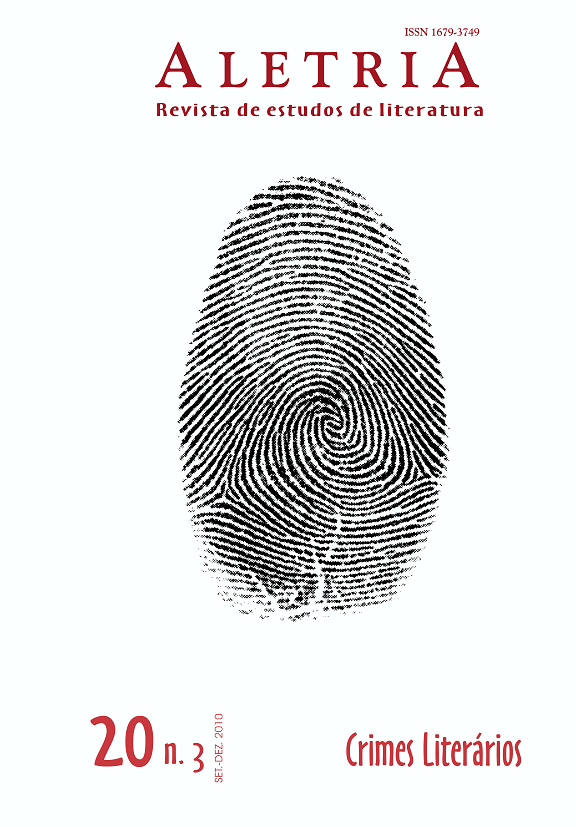Canibalismos e infanticídios em cena: sob o olhar infame dos Spoudaîon
DOI:
https://doi.org/10.17851/2317-2096.20.3.21-34Palabras clave:
tragédia, mal, prazer estéticoResumen
Na tragédia antiga, a crueldade e o mal, usualmente envolvendo personagens nobres (que podem tanto sofrer atrozmente quanto contemplar, com deleite, o sofrimento alheio), são frequentemente representados na forma de práticas horríveis, como o canibalismo e o infanticídio. Nosso propósito é discutir por que e como é possível obter prazer estético e conhecimento a partir daquilo que é moral e socialmente abominável e, além disso, observar como a plateia reage aos crimes e à violência no palco.
Descargas
Citas
AÉLION, Rachel. Euripide héritier d’Eschyle. Paris: Les Belles Lettres, 1983. t. 1.
ARISTÓTELES. Poetics. Edição bilíngue. Introdução, comentários e apêndices de D. W. Lucas. Oxford: Clarendon Press, 1968.
ARISTÓTELES. The poetics of Aristotle. Tradução e comentários de Stephen Halliwell. Chapel Hill: The University of North Carolina Press, 1987.
ARISTÓTELES. Etica a Nicomaco. Edição bilíngue e trad. Maria Araujo e Julian Marias. Madrid: Centro de Estúdios Constitucionales, 1989.
ARISTÓTELES. Ética a Nicômacos. Trad. Mário da Gama Kury. Brasília: Editora Universidade de Brasília, 1992.
ARISTÓTELES. Poética. Tradução e comentários de Eudoro de Sousa. Lisboa: Imprensa/ Nacional Casa da Moeda, 1992.
ARISTÓTELES. Política. Trad. Therezinha Monteiro Deutsch e Baby Abrão. São Paulo: Ed. Nova Cultural, 1999.
ARISTÓTELES. Poética. Tradução e comentários de Ana Maria Valente. Lisboa: Fundação Calouste Gulbenkian, 2007.
BELOFF, Halla. Social interaction in photographing. Leonardo, special issue: Psychology and the Arts, v. 16, n. 3, p. 165-171, 1983.
CARROL, Noël. Art, narrative, and moral understanding. In: LEVINSON, Jerrold. Aesthetics and ethics – essays at the intersection. Cambridge: Cambridge University Press, 2001. p. 126-160.
ESCHYLE. Agamemnon, Les choéphores, Les euménides. Ed. e trad. Paul Mazon. Paris: Les Belles Lettres, 1955.
GOLDMAN, Judith. Diane Arbus: the gap between intention and effect. Art Journal, v. 34, n. 1, p. 30-35, 1974.
EURIPIDIS. Euripidis fabulae. J. Diggle (Ed.). Oxford: Oxford University Press, 1984. 3 v. HANSON, Karen. How bad can good art be? In: LEVINSON, Jerrold. Aesthetics and ethics – essays at the intersection. Cambridge: Cambridge University Press, 2001. p. 204-226.
HERÓDOTO. Histórias. Trad. introd. e notas de Mário da Gama Kury. Brasília: Editora Universidade de Brasília, 1988.
LORD, Catherine. What becomes a legend most: the short, sad career of Diane Arbus. In: ______. Illuminations: women writing on photography from the 1850s to the present. In: HERON, Liz; WILLIAMS, Val (Ed.). Durham: Duke University Press, 1996. p. 237-250.
PLATÃO. Tutte le opere. Roma: Grandi Tascabilli Economici Newton, 1997.
PLATÃO. A República. Trad. e notas de Maria Helena da Rocha Pereira. Lisboa: Fundação Calouste Gulbenkian, 1983.
PLUTARCO. Vidas paralelas: Teseu e Rômulo. Trad. introd. e notas de Delfim Leão e Maria do Céu Fialho. Coimbra: Centro de Estudos Clássicos e Humanísticos, 2008.
SÓFOCLES. Oedipus Rex. Ed. R. S. Dawe. Cambridge: Cambridge University Press, 2006. RUNDIN, John. Pozo Moro, child sacrifice, and the Greek legendary tradition. Journal of Biblical Literature, v. 123, n. 3, p. 431-447, 2004.
SWARTLEY, Ariel. [Resenha de] Diane Arbus: a biography. Mother Jones Magazine, p. 58, July 1984.
Descargas
Publicado
Cómo citar
Número
Sección
Licencia
Derechos de autor 2010 Tereza Virgínia Ribeiro Barbosa (Autor)

Esta obra está bajo una licencia internacional Creative Commons Atribución 4.0.
Authors who publish with this journal agree to the following terms:Authors retain copyright and grant the journal right of first publication with the work simultaneously licensed under a Creative Commons Attribution Non-Commercial No Derivatives License that allows others to share the work with an acknowledgement of the work's authorship and initial publication in this journal.Authors are able to enter into separate, additional contractual arrangements for the non-exclusive distribution of the journal's published version of the work (e.g., post it to an institutional repository or publish it in a book), with an acknowledgement of its initial publication in this journal.Authors are permitted and encouraged to post their work online (e.g., in institutional repositories or on their website) prior to and during the submission process, as it can lead to productive exchanges, as well as earlier and greater citation of published work (See The Effect of Open Access).





